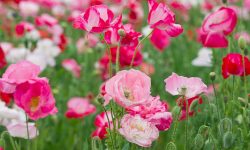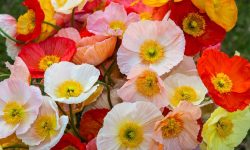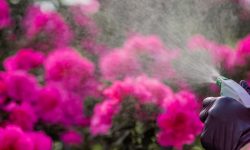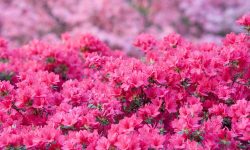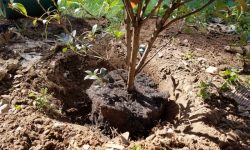Dandelions are versatile plants that offer both culinary and ecological benefits. Their leaves, flowers, and roots are edible and packed with nutrients, while their bright blooms attract pollinators to the garden. Many gardeners overlook these common plants, but learning how to harvest dandelions safely can transform them into valuable resources for food, medicine, and garden health.
Sustainable harvesting ensures that dandelions continue to thrive year after year. By understanding the best times to collect leaves, flowers, and roots, gardeners can enjoy maximum nutrition without harming the plant or the surrounding ecosystem. Proper techniques protect pollinators, maintain soil health, and support continuous blooms. This guide provides practical strategies for harvesting dandelions responsibly while maximizing their benefits for both humans and the garden environment.
Understanding Dandelions and Their Uses

Dandelions are hardy, perennial plants that thrive in a variety of soil types and climates. Their bright yellow flowers are easily recognizable, and every part of the plant offers valuable uses. Leaves can be eaten raw in salads, sautéed, or brewed into tea, providing vitamins A, C, and K along with minerals such as iron and calcium. Flowers can be used to make syrups, jellies, and infusions, while roots serve as natural remedies and coffee substitutes. Understanding these uses helps gardeners appreciate dandelions beyond their common “weed” reputation.
The ecological role of dandelions is equally important. They bloom early in the season, providing one of the first sources of nectar and pollen for bees, butterflies, and other pollinators. Their deep taproots break up compacted soil, improving aeration and nutrient cycling. This dual value—both nutritional and ecological—makes dandelions a versatile addition to any garden. Knowing the plant’s growth patterns and seasonal cycles ensures that harvesting can be done without compromising its health or pollinator support.
Sustainable harvesting practices begin with recognizing the right time and method for collection. Younger leaves are less bitter and more tender, flowers should be picked when fully open, and roots are best collected in late fall or early spring when nutrient concentration is highest. By integrating knowledge of dandelion uses with proper harvesting strategies, gardeners can enjoy continuous benefits, enhance garden biodiversity, and make the most of this resilient, valuable plant throughout the growing season.
Preparing Your Garden for Safe Harvest
Before harvesting dandelions, preparing the garden properly ensures plant health and sustainable yields. Start by selecting a clean area free from pesticides, herbicides, or chemical runoff. Contaminated soil or plants can introduce harmful substances into food or herbal remedies. Choose a site with healthy, vigorous dandelions that are well-established, as these plants are more resilient to repeated harvesting and continue to provide blooms for pollinators throughout the season.
Soil preparation also plays a role in safe harvesting. Dandelions thrive in well-draining, fertile soil rich in organic matter. Loosen the soil around the plants carefully to avoid damaging roots, especially if you plan to harvest them. Adding compost or organic mulch not only improves soil structure but also retains moisture and reduces weed competition. This preparation promotes robust growth, ensuring that leaves, flowers, and roots remain healthy for collection. Proper spacing between plants allows sunlight to reach lower leaves and encourages stronger stems and more abundant flowers, benefiting both harvest and pollinator activity.
Timing and tool selection are equally important. Harvest leaves in the early morning when they are fresh and crisp, and pick flowers when they are fully open for maximum flavor and nectar. Use clean, sharp scissors or garden shears to cut leaves and flowers without harming the plant. For roots, gently dig around the base with a trowel or fork, taking care not to disturb surrounding plants. By thoughtfully preparing the garden and selecting the right tools and timing, gardeners can harvest dandelions safely, maintain continuous plant health, and support the ecological balance in their garden while enjoying the full nutritional and aesthetic benefits of these versatile plants.
Tools and Techniques for Efficient Harvesting
Using proper tools and techniques is critical to harvest dandelions safely and efficiently. Clean, sharp scissors or garden shears prevent crushing stems and bruising leaves, which can reduce shelf life and increase disease risk. For roots, a garden trowel or fork allows careful soil loosening without damaging the taproot. Choosing the right tool ensures that the plant remains healthy and productive after each harvest.
Technique also impacts sustainability. When harvesting leaves, cut outer foliage and leave inner leaves to continue growth. Flowers should be pinched at the base to avoid harming nearby buds. For roots, loosen soil around the plant first, then gently extract the taproot, avoiding breaks. Overharvesting one section can weaken plants and reduce their ability to flower again. Rotating collection areas and taking only a portion of leaves, flowers, or roots ensures continuous productivity.
Proper techniques also enhance garden efficiency. Clean tools reduce contamination, while careful cutting preserves plant structure. By combining the right tools with precise methods, gardeners maximize yield, maintain plant health, and extend the growing season. Efficient harvesting supports continuous blooms, nutritious leaves, and strong roots. This approach allows gardeners to enjoy dandelion benefits sustainably while protecting the ecological balance and long-term vitality of their garden ecosystem.
Harvesting Leaves and Flowers
Harvesting Leaves
Dandelion leaves are most tender and flavorful in early spring, before the plant flowers. Younger leaves are less bitter, making them ideal for salads, sautés, and teas. When harvesting, focus on cutting the outer leaves first, allowing the inner growth to continue developing. This ensures that the plant remains healthy and can produce more foliage throughout the season. Regular leaf harvesting encourages new growth, keeps the plant vigorous, and prolongs the availability of edible greens.
Using clean scissors or garden shears prevents damage to the plant and reduces the risk of infection. Avoid removing more than one-third of the foliage at a time to maintain photosynthesis and energy storage in the roots. Leaves should be washed thoroughly before consumption to remove dirt and any insects. By harvesting carefully and selectively, gardeners enjoy nutritious leaves while keeping the dandelion patch sustainable. Consistent attention to leaf health also supports blooms for pollinators, maintaining the ecological balance in the garden.
Harvesting Flowers
Dandelion flowers are best collected when fully open and bright yellow, usually in mid-morning after dew has evaporated. Flowers can be used fresh in salads, infused into teas, or transformed into syrups and jellies. To harvest, gently pinch or cut the flower at the base, taking care not to damage surrounding leaves or unopened buds. Regular harvesting encourages the plant to produce new flowers and prolongs the blooming season.
Sustainable flower harvesting also supports pollinators. By leaving some blooms on the plant, bees, butterflies, and other insects continue to have access to nectar and pollen. Flowers should be rinsed gently to remove dust or insects before culinary or medicinal use. Selective collection ensures that dandelions remain productive, resilient, and attractive to beneficial insects. With mindful techniques, gardeners can enjoy vibrant, nutrient-rich flowers while maintaining healthy plants that continue to support both human use and the garden ecosystem.
Harvesting Dandelion Roots
Dandelion roots are a valuable part of the plant, rich in nutrients and used for culinary, medicinal, and herbal purposes. The best time to harvest roots is during late fall or early spring, when the plant stores most of its energy in the taproot. In late fall, leaves begin to die back, signaling nutrient transfer to the roots. In early spring, before new leaf growth starts, the roots contain concentrated vitamins, minerals, and beneficial compounds. Harvesting during these periods ensures maximum flavor and health benefits while supporting sustainable plant regrowth.
To harvest safely, gently loosen the soil around the base of the plant using a trowel or garden fork. Carefully dig to avoid breaking the taproot, which reduces its usefulness and may harm the plant’s recovery. Mature, thick roots are ideal for collection, as they provide the best nutrient density. After extraction, roots should be thoroughly rinsed to remove soil and debris. They can be used fresh, dried for later use, or prepared in teas, tinctures, or roasted as a coffee substitute.
Sustainable harvesting practices are essential to maintain healthy dandelion populations. Leaving some roots intact allows plants to regenerate and continue supporting pollinators and the surrounding ecosystem. Avoid taking all roots from a single area to ensure ongoing blooms and ecological balance. Using clean, sharp tools minimizes damage and prevents disease. By following these techniques, gardeners can enjoy nutrient-rich dandelion roots while preserving the long-term health, productivity, and ecological benefits of their garden.
Storing and Using Dandelion Harvests
Storing Leaves and Flowers
Proper storage of dandelion leaves and flowers extends their freshness and usability. Leaves should be harvested when young and tender, then rinsed thoroughly and patted dry to remove excess moisture. Store them in airtight containers or plastic bags with a paper towel to absorb moisture, and keep them in the refrigerator. Properly stored, leaves remain fresh for up to a week. Flowers are more delicate and should be used soon after picking. Refrigeration in a lightly ventilated container can preserve their color and texture for several days.
For long-term storage, leaves and flowers can be dried. Spread them on a clean surface in a shaded, well-ventilated area or use a dehydrator at low temperature. Once completely dried, store in airtight jars away from light and humidity. Dried leaves and flowers can be used for teas, infusions, or culinary recipes, retaining much of their flavor and nutritional value. By storing properly, gardeners can enjoy dandelion harvests throughout the season, reducing waste and making the most of this versatile plant. Consistent handling and storage practices maintain quality, extend usability, and ensure that nutritional and medicinal benefits are preserved.
Storing and Using Roots
Dandelion roots are hardy and can be stored for longer periods compared to leaves and flowers. After harvesting, rinse roots thoroughly and allow them to air dry to remove excess soil. For short-term use, roots can be stored in the refrigerator in a breathable bag for up to two weeks. For long-term preservation, roots should be dried completely and stored in airtight containers in a cool, dark place. Proper drying prevents mold growth and preserves flavor, nutrients, and beneficial compounds.
Roots can be used in various ways. Fresh or dried roots are suitable for making teas, tinctures, or herbal infusions, while roasted roots serve as a natural coffee substitute. Slicing or chopping roots before drying increases surface area, speeding up dehydration and enhancing usability. Using roots sustainably means leaving some plants intact, ensuring ongoing growth and ecological benefits. By following careful storage methods, gardeners maintain the nutritional and medicinal value of dandelions while supporting long-term plant health and continuous harvest cycles in the garden.
Everyday Uses of Dandelions
Dandelions are highly versatile plants with a wide range of uses in daily life, offering both nutritional and medicinal benefits. The young leaves are packed with vitamins A, C, and K, as well as minerals like calcium and iron. These leaves can be eaten raw in salads, lightly sautéed as a side dish, or blended into smoothies for a nutrient boost. Their mild, slightly bitter flavor adds complexity to culinary dishes while providing antioxidants and other beneficial compounds. Flowers can be harvested when fully open and used in syrups, jellies, or herbal teas. The bright yellow petals not only add color and visual appeal but also contain compounds that promote health and wellness.
Roots are equally valuable. Harvested in late fall or early spring, they are rich in nutrients and beneficial compounds. Fresh or dried roots can be brewed into herbal teas that support liver and digestive health, used in tinctures for detoxification, or roasted as a caffeine-free coffee alternative. Incorporating roots into daily routines offers both culinary and medicinal advantages, making them a sustainable and practical component of home gardening.
Dandelions also have applications beyond the kitchen. Traditional herbal medicine uses leaves as natural diuretics and roots to stimulate digestion and detoxification. Flowers contain antioxidants and can be incorporated into skincare products for their soothing and protective properties. Selective harvesting ensures that enough leaves, flowers, and roots remain on the plant to support pollinators and ongoing growth. By understanding the full range of everyday uses, gardeners can integrate dandelions into cooking, wellness routines, and natural living practices while maintaining a healthy, productive garden ecosystem year-round.
Common Mistakes When Harvesting Dandelions
Overharvesting Leaves and Flowers
Proper storage of dandelion leaves and flowers is essential to maintain freshness, flavor, and nutritional value. Leaves should be harvested when young and tender, rinsed thoroughly, and patted dry to remove excess moisture. Store them in airtight containers or resealable bags lined with a paper towel to absorb humidity. Keep the containers in the refrigerator, where leaves can remain fresh for up to a week. Flowers are more delicate and should be used as soon as possible. If refrigeration is necessary, place them in a lightly ventilated container to maintain texture and color.
For long-term storage, drying is an effective method. Spread leaves and flowers on a clean surface in a shaded, well-ventilated area or use a low-temperature dehydrator. Once completely dry, store them in airtight jars away from light and moisture. Dried leaves and flowers retain much of their flavor and nutrients and can be used in teas, infusions, or culinary dishes. Careful handling during storage prevents mold, maintains quality, and ensures that the nutritional and medicinal benefits of dandelions are preserved. By following these practices, gardeners can enjoy their harvest for extended periods, reducing waste and making the most of this versatile plant.
Damaging Roots
Dandelion roots are more robust than leaves and flowers, allowing for longer-term storage. After harvesting, rinse roots thoroughly to remove soil, then air-dry them to prevent excess moisture that could cause mold. For short-term use, roots can be kept in the refrigerator in a breathable bag for up to two weeks. For long-term storage, roots should be fully dried and stored in airtight containers in a cool, dark environment. Proper drying preserves their nutrients, flavor, and medicinal properties, ensuring they remain usable for months.
Roots have a wide range of uses. They can be sliced or chopped before drying to facilitate easier handling and faster dehydration. Fresh or dried roots can be used to make teas, tinctures, or herbal infusions that support digestion and liver health. Roasted roots serve as a natural coffee alternative. Sustainable use requires leaving some roots intact to allow plants to regenerate, ensuring continuous growth and flowering. By combining careful storage with mindful harvesting, gardeners can maintain the nutritional, medicinal, and culinary value of dandelions while protecting the health and productivity of their garden.
Encouraging Pollinators with Dandelion Harvesting
Dandelions are essential for supporting pollinators, providing one of the first sources of nectar and pollen in early spring. Bees, butterflies, and other beneficial insects rely on these blooms to establish strong colonies after winter. By leaving some flowers on the plant during harvest, gardeners ensure that pollinators continue to have access to food. This practice maintains the ecological balance of the garden while allowing human use of leaves, flowers, and roots.
Sustainable harvesting techniques enhance pollinator activity. Instead of removing all flowers from one area, gardeners can rotate collection zones, picking blooms from different sections at different times. This approach ensures that some flowers remain available for pollinators, prolonging their feeding opportunities. Additionally, preserving dandelions alongside other flowering plants creates a diverse habitat that attracts a wide range of insects, improving pollination rates for vegetables, fruits, and ornamental plants.
Mindful pollinator support also benefits long-term garden productivity. Healthy insect populations increase fertilization, leading to more abundant fruit and flower production. By understanding the ecological role of dandelions, gardeners can strike a balance between harvesting for personal use and maintaining a vibrant ecosystem. Encouraging pollinators through selective harvesting promotes biodiversity, supports plant reproduction, and ensures that dandelions continue to thrive year after year, providing both aesthetic and practical value to the garden.
Seasonal Tips for Year-Round Dandelion Care
Maintaining a thriving dandelion patch requires careful seasonal planning. In early spring, focus on harvesting young leaves and flowers while providing consistent water and sunlight to support growth. Summer care involves moderate pruning and regular observation for pests or diseases. Fall is the ideal time to collect roots, and late autumn preparation, including mulching and soil enrichment, ensures plant survival through winter.
Rotating harvest areas throughout the seasons prevents overexploitation and allows plants to recover. Soil fertility is critical for year-round productivity, and applying compost or organic mulch supports strong roots and healthy foliage. Monitoring flowering patterns informs optimal timing for collecting leaves, flowers, and roots, ensuring maximum quality and yield. By balancing harvest with seasonal care, gardeners maintain plant health and continuous availability of edible and medicinal parts.
Seasonal attention also promotes ecological sustainability. Healthy dandelion patches provide continuous nectar and pollen for pollinators, enhancing biodiversity and garden resilience. Combining seasonal care with mindful harvesting supports long-term productivity, vibrant blooms, and nutritious leaves and roots. By following these guidelines, gardeners enjoy the full benefits of dandelions throughout the year, creating a visually appealing, ecologically balanced, and sustainable garden environment.
FAQ About Harvesting Dandelion Safely
What is the best time to harvest dandelion leaves?
The best time to harvest dandelion leaves is in early spring when they are young and tender. Leaves picked before flowering are less bitter, nutritious, and ideal for salads, sautés, or teas. Avoid overharvesting to ensure the plant continues to grow and produce leaves throughout the season.
When should dandelion flowers be collected?
Dandelion flowers should be harvested when fully open, usually in mid-morning after dew has evaporated. Flowers at this stage have maximum nectar and flavor for culinary or medicinal use. Leave some flowers on the plant to support pollinators and encourage further blooming for a continuous harvest.
How do I harvest dandelion roots?
Harvest roots in late fall or early spring when nutrient concentration is highest. Gently loosen soil around the plant with a trowel or fork, carefully remove the taproot, and leave some roots intact for regrowth. Clean roots thoroughly before use in teas, tinctures, or as roasted coffee substitutes.
How should dandelion leaves, flowers, and roots be stored?
Leaves and flowers can be refrigerated in airtight containers with a paper towel or dried for long-term storage. Roots should be fully dried and stored in cool, dark, airtight containers. Proper storage preserves flavor, nutrients, and medicinal properties, extending the usability of your dandelion harvest.
Can harvesting dandelions affect pollinators?
Yes. Removing all flowers can reduce nectar and pollen availability for bees, butterflies, and other insects. Practice selective harvesting by leaving some blooms on the plant. This supports pollinator health, promotes continuous flowering, and maintains a balanced, thriving garden ecosystem while still providing edible and medicinal dandelion parts.
Conclusion
Harvesting dandelions safely and sustainably allows gardeners to enjoy nutritious leaves, vibrant flowers, and versatile roots without harming the plant or ecosystem. By following proper timing, techniques, and storage practices, you maintain continuous blooms, support pollinators, and preserve long-term plant health. Mindful harvesting ensures dandelions remain a valuable part of your garden year after year. Integrating these practices promotes ecological balance, enriches your culinary and herbal experiences, and provides ongoing enjoyment of this resilient, versatile plant. Sustainable management guarantees both personal benefits and thriving garden biodiversity.

